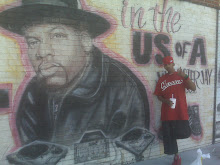


A few years ago, I finally got around to reading "Black No More," a novel by the late journalist, social satirist and novelist George Schuyler.
A former reporter for the Pittsburgh Courier, Mr. Schuyler was both a black conservative and a "race man," an archaic term that refers to someone who takes upon himself the duty of protecting and defending the black race.
First published in 1931, "Black No More" is a hilarious and brutal tale about Max Disher, a Harlem insurance agent and neighborhood rogue who undergoes a pigment-lightening process said to have been invented by Dr. Junius Crookmore, a black mad scientist. Dr. Crookmore's studies in Germany led to the invention of a machine that turns people of African descent into Swedes and Norwegians.
Once Max takes on his new identity as a white man, he changes his name to Matt Fisher and marries the unsuspecting daughter of a notorious white supremacist. As you can imagine, all sorts of hilarity and racial subversion ensue.
Max isn't alone in undergoing the novel's "black no more" process. The book has most of Harlem, from the intellectual elite to juvenile delinquent, undergo the relatively cheap skin-bleaching and hair-straightening transformation inside Dr. Crookmore's machine. So many blacks flood the market as newly minted Caucasians, enraged Southerners push legislation to make it illegal to switch races, rather than suffer the further devaluation of white skin.
I thought of George Schuyler's book last week when recent photos of famed baseball slugger Sammy Sosa, born dark-skinned in the Dominican Republic, began making the rounds. Like Max Disher, Sosa appears to have undergone significant lightening since his debut with the Texas Rangers and famed years with the Chicago Cubs.
While falling short of the albino whiteness Michael Jackson perfected over a quarter of a century, Mr. Sosa shows what can happen when black folks with money engage in too much impulse buying on the racial cosmetics market.
A few years ago, I finally got around to reading "Black No More," a novel by the late journalist, social satirist and novelist George Schuyler.
A former reporter for the Pittsburgh Courier, Mr. Schuyler was both a black conservative and a "race man," an archaic term that refers to someone who takes upon himself the duty of protecting and defending the black race.
First published in 1931, "Black No More" is a hilarious and brutal tale about Max Disher, a Harlem insurance agent and neighborhood rogue who undergoes a pigment-lightening process said to have been invented by Dr. Junius Crookmore, a black mad scientist. Dr. Crookmore's studies in Germany led to the invention of a machine that turns people of African descent into Swedes and Norwegians.
Once Max takes on his new identity as a white man, he changes his name to Matt Fisher and marries the unsuspecting daughter of a notorious white supremacist. As you can imagine, all sorts of hilarity and racial subversion ensue.
Max isn't alone in undergoing the novel's "black no more" process. The book has most of Harlem, from the intellectual elite to juvenile delinquent, undergo the relatively cheap skin-bleaching and hair-straightening transformation inside Dr. Crookmore's machine. So many blacks flood the market as newly minted Caucasians, enraged Southerners push legislation to make it illegal to switch races, rather than suffer the further devaluation of white skin.
I thought of George Schuyler's book last week when recent photos of famed baseball slugger Sammy Sosa, born dark-skinned in the Dominican Republic, began making the rounds. Like Max Disher, Sosa appears to have undergone significant lightening since his debut with the Texas Rangers and famed years with the Chicago Cubs.
While falling short of the albino whiteness Michael Jackson perfected over a quarter of a century, Mr. Sosa shows what can happen when black folks with money engage in too much impulse buying on the racial cosmetics market.
If Mr. Sosa is trying to steal a base on the other side of the color line, he has plenty of company. I was surprised to read a list on the Internet about all of the black performers -- especially R&B artists -- who are also believed to use skin lighteners.
Using skin lighteners is generally frowned upon in the African-American community, but somebody in that demographic is buying them. Skin-whitening soaps containing banned ingredients in the U.S. and Europe have accounted for billions in sales in Africa alone in the last half century.
Advertisers in Asia know that they can juice sales by appealing to the vanity of female customers obsessed with achieving "milky white skin" they consider more desirable and aristocratic. Skin whiteners are believed to be an even larger business in Asia than in Africa.
The politics of skin lightening couldn't be more absurd. There is probably more acceptance of someone undergoing sex reassignment than of someone trying to "upgrade" their color. A transgendered person is trying to find a body in which to feel more authentic. Someone lightening his skin has bought into an inherently corrupt measurement of worth in society.
Folks who try to buy social acceptance in a bottle of whitening lotion are looking for the kind of shortcut to success Mr. Sosa sought when he turned to steroids. It's cheap and degrading to the soul.
Perhaps I'm being unfair to folks who feel "whitening up" is in line with their sense of beauty and personal aesthetics. Who says that you only get one bite at the apple of racial identity? For all his brilliance, George Schuyler could be wrong. In the end, looking askance at what many would consider pitiful attempts at racial migration is just another way of being prejudiced.





No comments:
Post a Comment